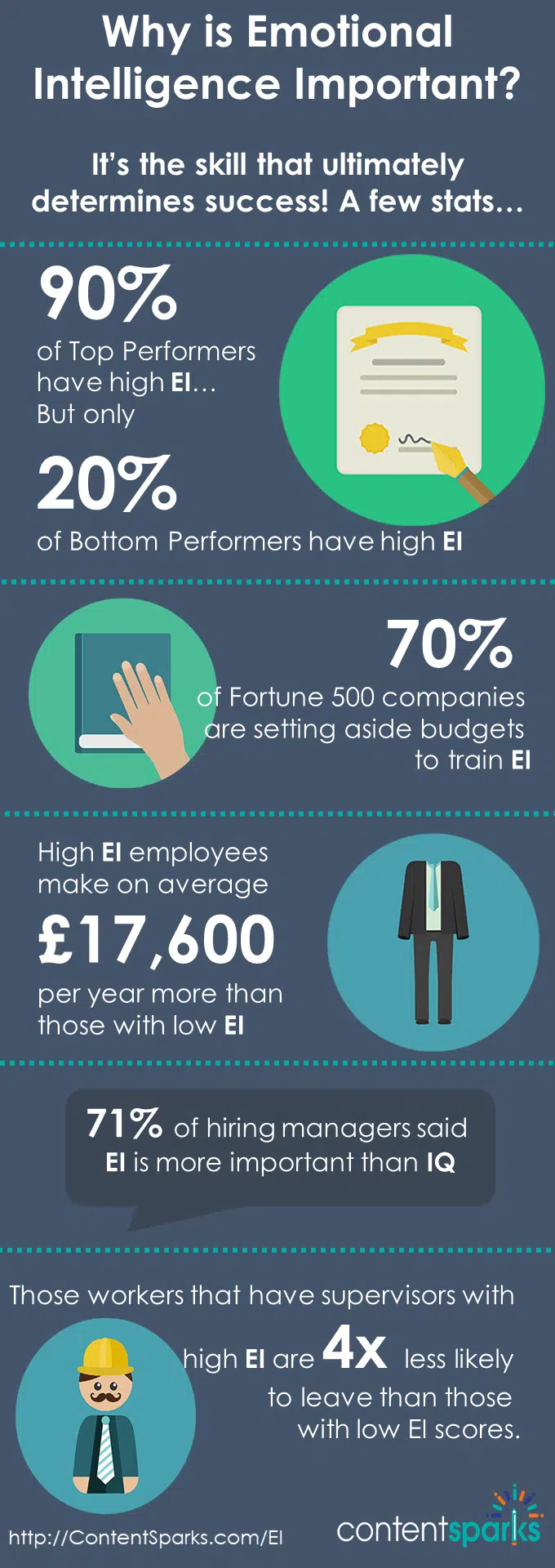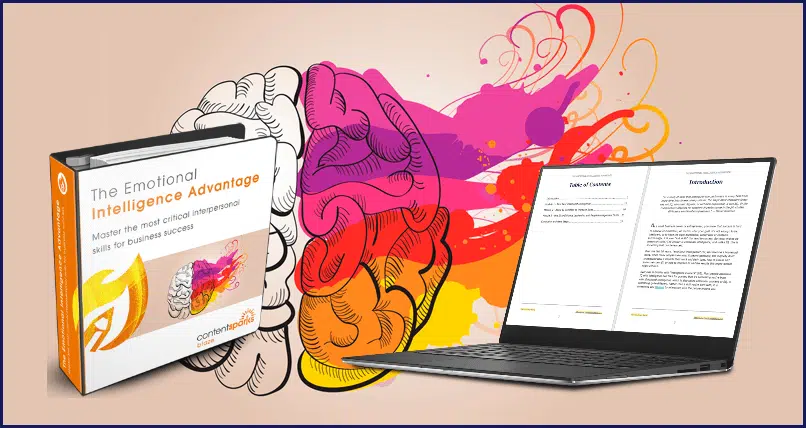Schools continue to measure success primarily by academic grades, but they're still in their infancy when it comes to teaching the skill that determines people's ultimate success in the world – Emotional Intelligence.

Your own target market and customers may be incredibly smart and did well in school. Or they may not have gotten good grades and still suffer from the disapproval.
However, many of those who didn't get the straight A's and top scores went on to build profitable careers in a variety of fields. How?
Their high EQ (emotional quotient) was the key. And a high EQ translates to high Emotional Intelligence (EI).
Take a look at the stats...

Already convinced you need to teach Emotional Intelligence?
That's great, but how do you go about it? How can you teach skills and behaviors that seem to come naturally to some people and are a challenge for others?
We may be past the more impressionable childhood years, but that doesn't mean we can't learn to change our behaviors and thinking habits.
Anyone can improve their Emotional Intelligence. It just takes practice, support, and reinforcement.
As a coach, trainer, or consultant, you can help your clients and customers build EI through a structured program that blends different types of learning media.
What to include in your Emotional Intelligence training
Since Emotional Intelligence is something that takes time to develop, don't expect your learners to become experts after a few hours.
Instead, build a program that combines elements of self-study, live interaction, video, email, and other reinforcement.
For example, here's one outline you could follow:
Part 1: Self-study introduction to Emotional Intelligence (pre-work for webinar)
Part 2: Live webinar OR recorded video introducing the core concepts of EI
Part 3: Self-assessments and analysis (done on their own)
Part 4: Live webinar or one-on-one sessions analyzing results
Part 5: Video, workshop, or webinars on targeted application and practice of EI (eg, sales, leadership, teams, etc)
Part 6: Live Q&A webinar(s) after people have practiced their skills (learning activities/assignments)
Part 7: Action Planning – self-study combined with one-on-one review or accountability partner discussion
Part 8: Ongoing reinforcement – regular emails, calls, resource portal, blog posts, etc to remind people to practice and give additional tips
Do you see how the program alternates between self-study, live, one-on-one, and reinforcement?
You can't truly teach someone to change their behaviors without giving them ongoing support, even if that just means sending a series of emails. But you'll see even greater success if you take it a step further and add a community element (like a Facebook Group), accountability partners, and one-on-one coaching.
With all that said, the ultimate key is your student's commitment to learning EI. Unless they truly believe it will make a difference in their lives, they won't be willing to put in the effort required to learn.
You can help create that commitment by explaining the importance upfront, and then having them write down scenarios in which emotions impacted their behavior or the behavior of others. For business situations, that could be something like a conflict situation or an occasion where they weren't able to close a sale because they couldn't build trust and rapport with a prospect.
One of the goals of ongoing reinforcement is to help people maintain their commitment and keep practicing their EI.
Over time, you can help them see the results they're getting and encourage them to share with the rest of your community.
Ready to get started?
The Emotional Intelligence Advantage
Teach Yourself. Then teach your audience.

We have a complete set of course materials you can use to build your own program on Emotional Intelligence, so you don't have to start from scratch!
You can edit those materials for your market, put your name on them, and sell for 100% profit

Tags
